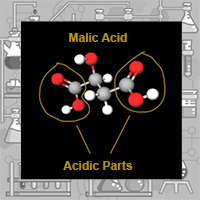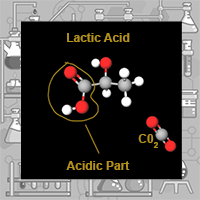Posted by Brent Modzelewski on March 1, 2020
Butter Side Down
Dairy-Free.
Your bread may land butter side down, but where does that buttery flavor in my Chardonnay come from? It must be the oak barrels, right?
No, it is not the oak, even though you probably have been told this over and over again. It is a common misconception that the butter flavor comes from the oak barrel.
Unfortunately, this wrong information has spread pervasively. The vast majority of bartenders and wine servers at restaurants continue to propagate this misinformation.
The buttery flavor you are tasting in the wine comes from a secondary fermentation process, called Malolactic Fermentation.
This secondary fermentation process changes the naturally occurring Malic Acid into a softer acid called Lactic Acid.
The Lactic Acid is the same acid found in dairy products and gives a wine buttery and creamy notes.
Chardonnay is a good example of a white wine that holds up well to Malolactic Fermentation (MLF). Big buttery Chards are a signature of California Chardonnays, whereas you will rarely taste a buttery Chardonnay from Chablis.
However, travel a little further southeast in France and you will definitely find full bodied Chardonnays from Meursault that are wonderfully balanced with elegant buttery notes.
Wine Nerd Fact Information
During Malolactic Fermentation (MLF) bacteria coverts Malic acid to Lactic acid.
Although oak itself does not bring on the buttery flavor to the wine, naturally occurring bacteria can reside in the oak barrels resulting in unintentional MLF occurring in barrel.
This is one reason why so many people think the flavor comes from oak. Rest assured, you can have a beautiful buttery Chard fermented in a stainless steel vat, I sure have.
Winemakers planning to utilize the MLF process for their wines typically introduce a specific cultured bacteria.
Malic Acid C4H6O5 is a dicarboxylic acid, whereas L-Lactic Acid C3H6O3 is alpha-hydroxy acid. What that means to wine drinkers is that Lactic Acid is half as acidic as Malic Acid.
Wines like Sauvignon Blanc don't benefit from MLF because winemakers want to keep the telltale bright acidic and citrus notes that make a Sauvignon Blanc....a Sauvignon Blanc.


Although MLF is most noticeable in white wines like Chardonnay, many red wines also benefit from MLF by softening the acidity helping to balance the wine.
You won't necessarily distinctly taste butter in your Cabernet Sauvignon because it is masked by the other more intense flavors of the wine


Copyright Great Meadow Products, LLC. All rights reserved.
